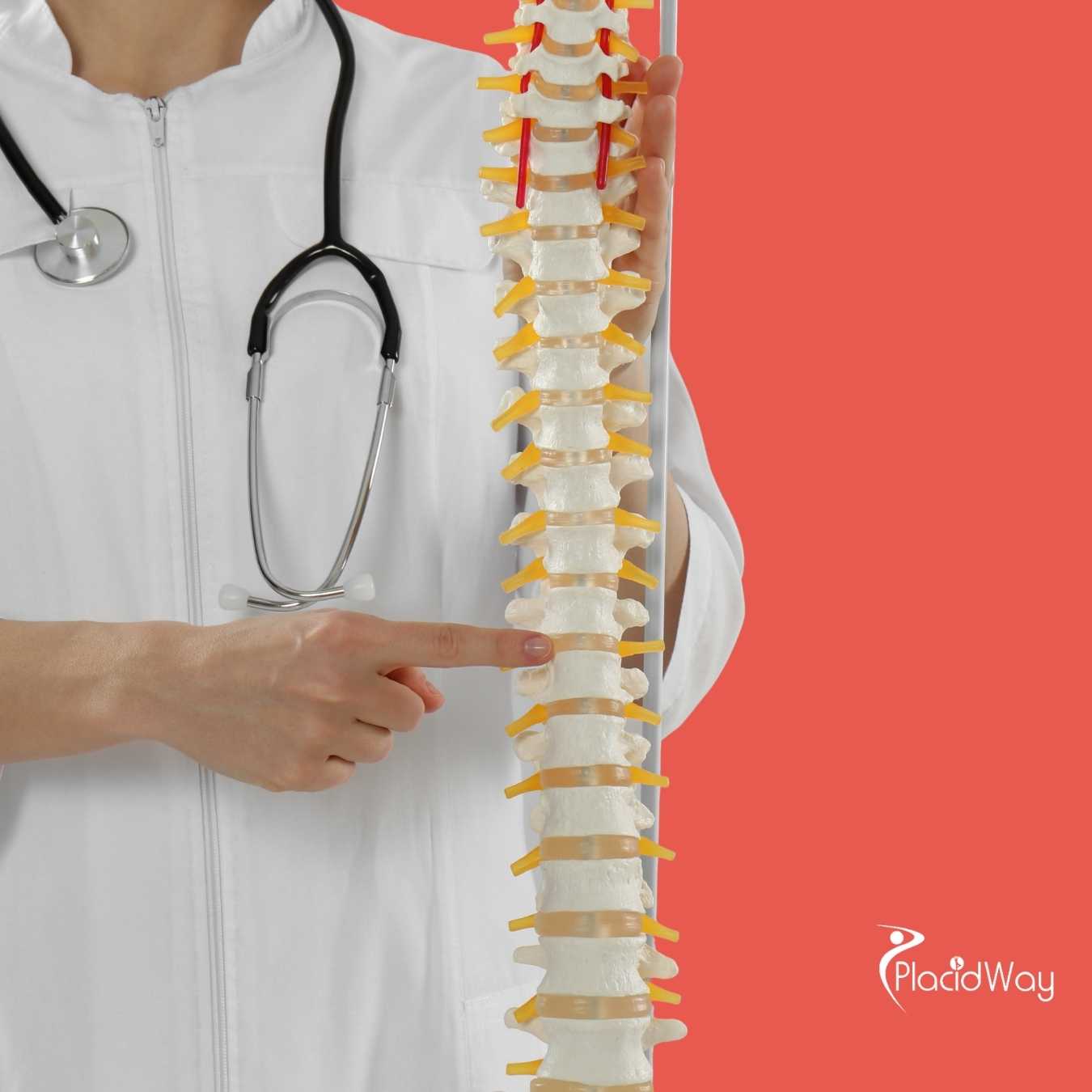Stem Cell Therapy Cost for Neuropathy: Everything You Need to Know
.png)
If you're living with neuropathy, you understand the constant search for effective treatments that can alleviate symptoms and improve your quality of life. Stem cell therapy for neuropathy has emerged as a promising avenue, sparking hope for many who haven't found relief with conventional methods. However, a crucial question that often arises for patients considering this innovative treatment is, "How much does stem cell therapy cost for neuropathy?" It's a valid concern, as the investment can be substantial, and understanding the financial aspect is essential for making informed decisions about your healthcare journey.
Generally, the cost of stem cell therapy for neuropathy can vary widely, often falling in a range from $5,000 to $15,000 or even higher per treatment session. This variation is due to numerous factors, including the type of stem cells used, the complexity of the procedure, the geographical location of the clinic, and the overall treatment plan tailored to your specific condition. As you explore this cutting-edge option, it’s important to delve deeper into these influencing factors and understand what goes into the pricing, helping you navigate the options available and prepare for the potential expenses involved in seeking relief from your neuropathy symptoms.
What Factors Influence the Cost of Stem Cell Therapy for Neuropathy?
Several elements contribute to the varying prices of stem cell therapy for neuropathy. The choice of stem cells—whether autologous (from the patient's own body) or allogeneic (from a donor), and their source (bone marrow, adipose tissue, or umbilical cord)—plays a significant role. Autologous procedures involve harvesting cells from the patient, which adds to the procedural cost. Additionally, the clinic's expertise, the qualifications of the medical team, and the technology used for cell processing and administration can impact pricing.
Geographical location is another major determinant; clinics in metropolitan areas or countries with higher living costs often charge more than those in less expensive regions. The extent of your neuropathy and the number of treatments needed also directly affect the total expense. Some patients may require multiple sessions to achieve desired results, increasing the overall neuropathy stem cell treatment price. Finally, comprehensive packages that include pre-treatment evaluations, post-treatment follow-ups, and supportive therapies will naturally be more expensive.
Is Stem Cell Therapy for Neuropathy Covered by Insurance?
Unfortunately, most insurance companies do not cover the cost of stem cell therapy for neuropathy. This is primarily because many stem cell treatments for conditions like neuropathy are still considered experimental or are in various stages of clinical trials and have not yet received full FDA approval (in the US) or similar regulatory body approval globally for widespread clinical use. Insurers usually only cover treatments deemed medically necessary and widely accepted as standard care.
Patients considering this therapy should anticipate paying for the entire procedure themselves. It's crucial to confirm with your insurance provider directly, as policies can vary, but expect to encounter limitations. Some clinics may offer financing options or payment plans to help manage the significant neuropathy treatment expenses. Always get a clear breakdown of all costs upfront before proceeding with treatment.
What Are the Typical Inclusions in the Price of Stem Cell Treatment for Neuropathy?
When you receive a quote for stem cell therapy for neuropathy, it usually encompasses several components. A fundamental inclusion is the initial consultation and comprehensive diagnostic assessments, which may involve blood tests, nerve conduction studies, or imaging to evaluate your condition and suitability for treatment. This phase is crucial for tailoring an effective treatment plan.
The core of the treatment involves the stem cell harvesting procedure (if autologous), the precise processing and activation of the cells in a specialized lab, and the careful administration (injection) of these cells into the affected areas. Post-procedure care, including follow-up appointments and guidance on recovery, is often part of the package. However, it's vital to inquire about specific details, as some clinics might charge separately for medications, extended rehabilitation, or additional therapies, impacting the overall cost of stem cells for nerve damage.
What Types of Stem Cells Are Used for Neuropathy Treatment?
Several types of stem cells are utilized in the treatment of neuropathy due to their potential to repair damaged nerves, reduce inflammation, and promote tissue regeneration. Mesenchymal stem cells (MSCs) are particularly popular. These can be sourced from a patient’s own adipose (fat) tissue or bone marrow, offering an autologous option. MSCs are valued for their ability to differentiate into various cell types, secrete growth factors, and modulate the immune system, all of which are beneficial in addressing nerve damage.
Another increasingly used source is umbilical cord blood or tissue, which provides allogeneic (donor) stem cells. These cells are typically younger and more potent, and their use bypasses the need for a harvesting procedure from the patient. Each type of stem cell has its advantages, and the choice often depends on the specific clinic's protocols, the patient's condition, and the overall treatment strategy for nerve regeneration and symptom relief.
How Do Stem Cell Therapy Costs for Neuropathy Abroad Compare to Domestic Prices?
For many individuals, seeking stem cell therapy for neuropathy abroad, often referred to as medical tourism, presents a compelling alternative due to considerable cost savings. Countries like Mexico, Costa Rica, Panama, and certain Eastern European nations offer advanced stem cell treatments at a fraction of the price found in the United States, Canada, or Western Europe. These lower costs are typically attributed to lower operational expenses, physician fees, and reduced administrative overhead in these regions.
While the reduced neuropathy stem cell treatment price abroad is attractive, it's crucial to consider the total investment, including travel, accommodation, and potential language barriers. However, many international clinics cater specifically to medical tourists, offering comprehensive packages that include these aspects, ensuring a smoother experience. The opportunity to access high-quality treatment at a more affordable rate is a primary driver for patients exploring stem cell therapy abroad for neuropathy.
Which Countries Offer Affordable Stem Cell Therapy for Neuropathy as Medical Tourism Destinations?
When considering medical tourism for stem cell therapy for neuropathy, several countries stand out for their combination of affordability and reputable clinics. Mexico, particularly cities near the U.S. border, is a well-established destination, offering competitive prices and experienced medical professionals. Costa Rica and Panama are also gaining recognition for their modern facilities and appealing tourism environment, making them attractive options for patients seeking regenerative therapies.
In Eastern Europe, Ukraine has developed a strong reputation for advanced stem cell research and treatments, often at significantly lower costs than Western nations. Furthermore, countries in Asia, such as Thailand and India, are emerging as viable options, providing state-of-the-art medical services at very accessible price points. When exploring these options for stem cell treatment for peripheral neuropathy cost, it’s essential to research clinic accreditations, physician qualifications, and patient testimonials to ensure quality and safety.
What Should I Consider When Choosing a Clinic for Stem Cell Therapy for Neuropathy Overseas?
Selecting the right clinic for stem cell therapy for neuropathy overseas requires careful due diligence. First and foremost, verify the clinic's accreditations and regulatory compliance within its country. Reputable clinics should adhere to international safety and quality standards. Research the qualifications and experience of the medical team, ensuring they specialize in regenerative medicine and have a proven track record with neuropathy patients.
Investigate the specific types of stem cells for neuropathy they use and their sourcing, processing, and administration protocols. Robust safety measures and infection control practices are paramount. Look for patient testimonials and success stories, and ideally, communicate with former patients if possible. Finally, ensure complete transparency regarding the total cost of stem cell therapy for neuropathy, including all procedures, follow-ups, and any additional services to avoid hidden fees. A comprehensive understanding of the clinic's approach and costs is vital for a safe and effective experience.
What Are the Potential Benefits of Stem Cell Therapy for Neuropathy?
Stem cell therapy for neuropathy offers several promising benefits by addressing the root causes of nerve damage. Stem cells have the unique ability to differentiate into various cell types, including nerve cells, which can contribute to the regeneration of damaged nerves. They also possess strong anti-inflammatory properties, reducing swelling and irritation around the affected nerves, a common contributor to neuropathic pain.
Patients have reported improvements in nerve signal transmission, leading to reduced numbness, tingling, and burning sensations. For some, this translates into a significant reduction in chronic neuropathic pain and a greater ability to perform daily activities, thereby enhancing their overall quality of life. While individual results may vary, the regenerative potential of these cells makes them a valuable option for those seeking sustained relief and functional improvement from their neuropathy symptoms.
Are There Any Risks Associated with Stem Cell Therapy for Neuropathy?
While stem cell therapy for neuropathy holds great promise, it's essential to be aware of the potential risks, similar to any medical intervention. The most common risks are generally mild and localized, such as pain, swelling, or bruising at the injection or harvesting site. There is also a small risk of infection, which can be minimized by ensuring the clinic adheres to stringent sterile protocols.
For allogeneic stem cell therapies (using donor cells), there's a rare possibility of an immune reaction, though mesenchymal stem cells are known for their immunomodulatory properties, reducing this risk. In very rare cases, unintended cell growth or tumor formation has been a theoretical concern, though clinical evidence for this in regulated treatments for neuropathy is minimal. It's crucial to discuss all potential risks with your physician and choose a reputable clinic that prioritizes patient safety and uses ethically sourced and processed stem cells.
To explore comprehensive solutions for your healthcare needs, including medical tourism for advanced therapies, please visit PlacidWay. We connect you with world-class clinics and treatment options to help you make informed decisions about your health journey.


.png)









Share this listing